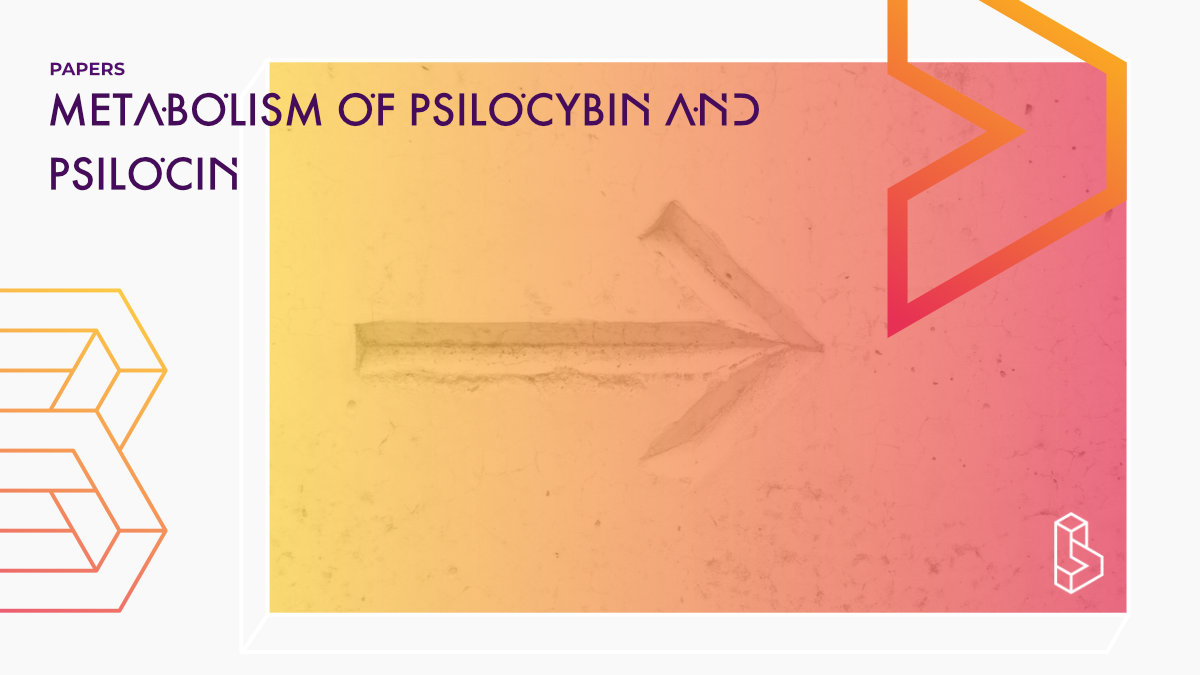This review article (2017) investigates the metabolism of psilocybin and psilocin (to which it metabolizes via dephosphorylation).
Abstract of Metabolism of psilocybin and psilocin
“Psilocybin and psilocin are controlled substances in many countries. These are the two main hallucinogenic compounds of the “magic mushrooms” and both act as agonists or partial agonists at 5-hydroxytryptamine (5-HT)2A subtype receptors. During the last few years, psilocybin and psilocin have gained therapeutic relevance but considerable physiological variability between individuals that can influence dose-response and toxicological profile has been reported. This review aims to discuss the metabolism of psilocybin and psilocin, by presenting all major and minor psychoactive metabolites. Psilocybin is primarily a pro-drug that is dephosphorylated by alkaline phosphatase to active metabolite psilocin. This last is then further metabolized, psilocin-O-glucuronide being the main urinary metabolite with clinical and forensic relevance in diagnosis.”
Author: Ricardo J. Dinis-Oliveira
Notes on Metabolism of psilocybin and psilocin
“These compounds differ from most other psychoactive drugs since they induce neither dependence nor addiction nor are used for prolonged periods; in other words, these drugs do not interfere with the mesolimbic rewarding system and are considered physiologically safe.”
“Psilocin and psilocybin are typically used as recreational drugs by eating the mushrooms, which contains them at concentrations of up to 0.5% and 2% (m/m), respectively. Nevertheless, these concentrations show a large variation depending on the species, origin, mushroom sizes, growing and drying conditions, and age.”
“Pharmacokinetic studies in animals showed that only 50% of 14C-labelled psilocybin is absorbed following oral administration and is almost uniformly distributed throughout the body, including the brain, where it exerts its psychedelic properties.”
In other words, it’s distributed throughout the whole body and thus depends on the weight of a person (possibly amongst other factors); also see Hopf & Eckert (1974) for an animal study on this.
“Moreover, the in vivo studies in rats showed that psilocybin is rapidly hydrolyzed in the intestine to psilocin, meaning that psilocybin is absorbed mostly or even all as psilocin.”
“About 25% of the whole dose was shown to be excreted unaltered. A controlled study in humans showed that within 24 h, 3.4 ± 0.9% of the applied dose of psilocybin was excreted in urine as free psilocin.”
“Therefore, MAO inhibitors are also co-consumed by psilocin abusers to intensify its hallucinogenic effects.”
“The analysis of serum samples collected 5 h after “magic mushrooms” intoxication showed that up to 80% of the psilocin was present as the O-glucuronide conjugate and is eliminated by urine in this form” – but still may be detectable after 7 days.
“Literature data suggest that psilocybin and psilocin exhibit low toxicity and may be seen as physiologically well tolerated. However, most studies are old and do not meet contemporary standards for safety assessment and therefore more controlled studies are needed to ascertain the therapeutic role in certain diseases, especially those psychiatry-related.”
”Finally, scarce data is available regarding other active hallucinogen compounds found in mushrooms. Indeed, besides psilocybin and psilocin, magic mushrooms also contain baeocystin (4-phosphoryloxy-N-methyltryptamine) and norbaeocystin (4-phosphoryloxytryptamine), which are mono- and di-N-demethylated equivalents of psilocybin, respectively.”
Summary of Metabolism of psilocybin and psilocin
Psilocybin and psilocin are controlled substances in many countries and are agonists or partial agonists at 5-HT2A subtype receptors. Their metabolism is complex, with several major and minor psychoactive metabolites.
Find this paper
Metabolism of psilocybin and psilocin: clinical and forensic toxicological relevance
https://doi.org/10.1080/03602532.2016.1278228
Open Access | Google Scholar | Backup | 🕊
Cite this paper (APA)
Dinis-Oliveira, R. J. (2017). Metabolism of psilocybin and psilocin: clinical and forensic toxicological relevance. Drug metabolism reviews, 49(1), 84-91.
Study details
Compounds studied
Psilocybin
Topics studied
Chemistry
Study characteristics
Literature Review
Bio/Neuro

